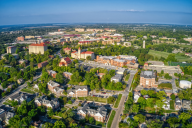You have /5 articles left.
Sign up for a free account or log in.
Improving college and career readiness among our high school students is one of the great imperatives facing our nation. To meet this challenge, educators, policymakers and business leaders are working to increase students’ academic skills through a host of national and state initiatives, including the Common Core State Standards.
While it goes without question that students need strong academic skills to succeed in postsecondary education, our research indicates that “college readiness” must be more broadly conceived. In a recent study, we interviewed almost 200 community college faculty, staff and students. These interviews made abundantly clear that certain non-academic skills, behaviors and attitudes are equally germane to college success.
Non-academic college readiness is only peripherally discussed by practitioners and policymakers. It remains poorly articulated, leaving new college students unclear about the expectations they will face, and high school and college practitioners unable to help them truly prepare. As educators aim to make the academic skills needed for college readiness clear and measurable, they must do the same for non-academic skills.
In our recent research, we identified four specific areas -- academic habits, cultural know-how, the ability to balance school and other demands and engaging in help-seeking -- in which college faculty had clear expectations of their students. These expectations differed substantively from those in high school, and while meeting them was critical to college success, they remained largely unspoken.
Many college instructors think they already clearly articulate their expectations to students, but our research indicates that behavioral expectations must be made far more explicit and precise. As one student we spoke to -- who dropped out after her second semester -- told us: “they didn’t tell me what to expect, so I didn’t know what to do!” Overall, the evidence points to the need for active, scaffolded guidance so that students can develop the behaviors and strategies exhibited by effective college students.
Take “studying,” for example. College instructors often tell students they must “study hard” for their class. But in high school, studying usually entails completing nightly homework, taking biweekly tests, and completing short-term assignments. College “studying,” in contrast, means completing work independently -- even if the teacher doesn’t collect or grade it. It means reviewing a syllabus at the beginning of a course, developing a plan to complete long-term projects and studying large amounts of material for infrequent exams.
Students who meet the college expectation of studying hard use strategies such as breaking their syllabus into small chunks of material to learn at regularly scheduled intervals, and taking notes in the margins of their textbooks while reading. Instructors should explain these successful behaviors to students on the first day of class, and regularly remind them of these and other important skills, such as recognizing when they need help, and asking for assistance rather than waiting for it to be offered.
To make their expectations sufficiently explicit and actionable, instructors will have to first spend time reflecting upon the non-academic behaviors and skills they expect of their students. Once they have identified their own expectations, instructors can make these clear to students and develop assignments that will help students learn to employ the necessary behaviors. For example, when an instructor asks students to “come to class prepared,” what does she mean? If she means coming to class having completed a reading and being prepared to participate in discussions about it, she can include this expectation in the syllabus, explain it to students from the first day of class, and assign students to write out three questions or observations about the reading to discuss each week.
Institutions can formalize this process by asking entire departments or disciplines to similarly identify and explicate the unspoken expectations to which students are held. Conversations about behavioral expectations could be conducted as part of program review, professional development or the creation of learning outcomes. Importantly, institutions must then make these newly identified non-academic expectations clear to current and future students -- by embedding them into course syllabi and structuring orientation, outreach activities and success courses around them.
Colleges should also work with high schools and state education policymakers to ensure that these non-academic readiness standards are incorporated into ongoing local and state college readiness initiatives. Senior-year transition courses, college-high school partnership programs and Common Core implementation are all avenues through which non-academic collegiate expectations can be clearly communicated to students, and successful skills and behaviors can be taught.
The bottom line is that educators must stop blaming students for breaking rules that they do not know exist. Until students are told the concrete ways college and high school are different, and provided strategies for how they might meet new expectations, there is a danger that all the focus on academic readiness will not lead to real change in students’ postsecondary achievement.








